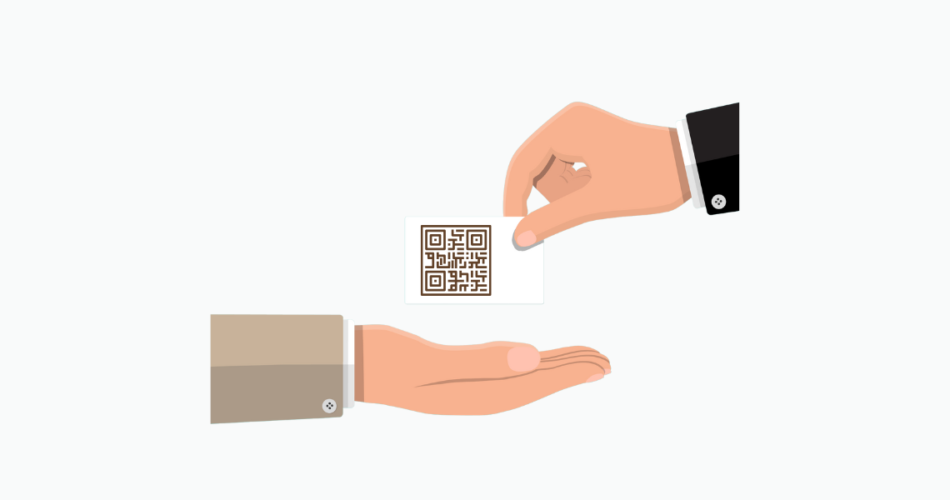As a working professional, you understand the power of networking. Building connections opens door to new business opportunities and broadens one’s perspective and knowledge.
Traditionally, you would give out your business cards with the hope that the recipients would save your contact and reach out in the future.
Traditional business cards are disadvantageous as the recipient has to input all your information to save you as a contact.
This can be a long, effort-intensive, and boring process. Hence, most cards usually end up in the trash.
Moreover, ever since the pandemic, most business processes have become contactless. E-business cards are a great way of contactless contact sharing in a digital format.
For the uninitiated, e-business cards help you share your contact details with the recipient directly on the recipient’s mobile devices with the use of a QR Code, web link, or Near Field Communication(NFC tech).
They help you easily share your contact details and also assist the recipients in quickly saving them.
In this article, we will tell you all you need to know about e-business cards and how to create one.
Let’s begin.
A. E-business card—all you need to know
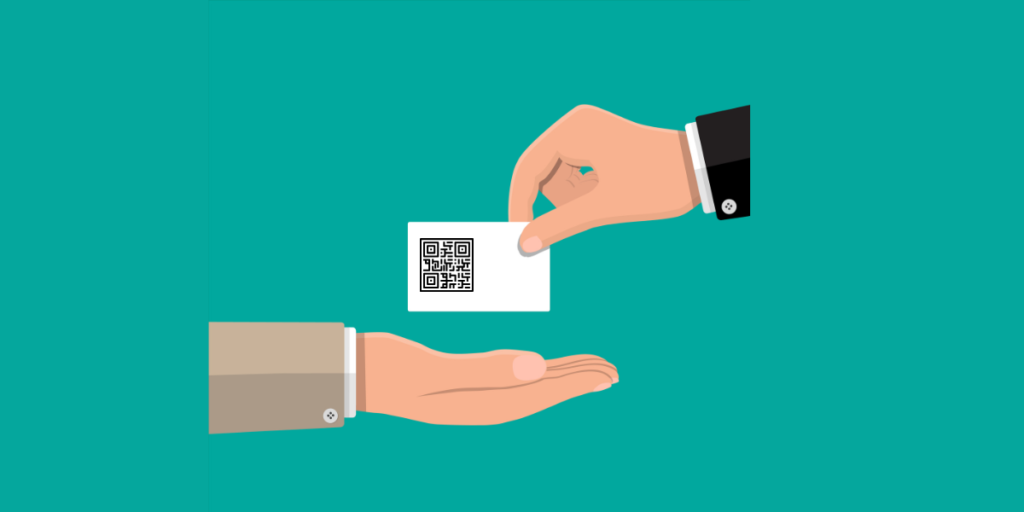
An E Business Card is a digital form of a traditional business card. It contains essential contact information.
It offers many additional benefits, including seamless integration with social media, websites, and even multimedia content.
E-business cards can be shared through email, messaging apps, or social platforms.
Here’s a breakdown of key details often found on an E-Business Card:
- Name and Company Details: Like a traditional card, it includes the person’s name, position, and company.
- Contact Information: Email, phone number, and address for direct reach.
- Social Media Links: Direct links to social media channels like LinkedIn, Twitter, Instagram, and other profiles.
- Website and Portfolio Links: Links to personal websites or online portfolios.
- Media Content: Some e-business cards even include video introductions or portfolios.
- Actionable button: It helps the recipient add you as contact with a simple button click
You can create an e-business card via a mobile app or a website. And you can share it via various channels, such as website URLs, NFCs, or QR Codes.

Though QR Codes are very popular and efficient ways of sharing e-business cards, there are a few other alternatives that offer some convenient options for different situations and preferences.
Here is a look at other ways e-business cards can be shared:
1. Direct link sharing
The majority of e-business cards have a specific link shared. Many services help you create e-business cards.
These can then be shared via a web link via promotional creatives, in communities, etc. It can be used in your email signature, on your social media, or in messaging.
Pros:
- Quick to share across various digital platforms.
- Ideal for online promotions and email marketing.
Cons:
- To access the business card, people will have to open their browser and type the entire link.
- Doing this again and again is a long and tedious process. Hence, many people often don’t follow through and drop out.
Best For: Professionals who engage in online marketing, email campaigns, or have strong digital outreach.
Industry Use Case:
- Marketing Professionals: Direct links can be shared easily on social media and promotional banners. This helps drive traffic to their contact page.
- Freelancers and entrepreneurs: Useful for email signatures to direct clients to their portfolio or booking page.
Top Vendors:
- HiHello: Offers a customizable link for your e-business card that can be easily shared.
- Ebusinesscards: Provides a direct link along with features for tracking engagement and analytics
2. NFC (Near Field Communication)
NFC is a short-range wireless technology. It allows you to share data between an NFC tag and a smartphone or between two NFC-powered smartphones.
Nowadays, most smartphones are equipped with NFC. You can utilize it to share your e-business cards with a single tap.
This is quite convenient and useful for large, crowded conferences. Just by tapping your phone on any other NFC-enabled phone, you can copy all your information instantly.
Pros:
- Quick and interactive sharing with just one tap.
- Great for crowded events like trade shows and conferences.
Cons:
- NFC is limited to an extremely short range; you have to be next to the person for successful sharing.
- Both devices must be NFC-enabled, which may not always be the case.
Best For: Networking at events, trade shows, and in-person meetings.
Industry Use Case:
- Event Managers: NFC cards are perfect for networking at large conferences where people can share contacts in person.
- Sales Executives: Quick and efficient for sharing contact information during client meetings.
Top Vendors:
- Scube: Specializes in NFC business cards that enable instant contact sharing with a tap.
- 1card: Offers NFC-based cards and a digital platform for creating and managing contact information.
3. Email or SMS sharing
Almost all smartphones and devices support sharing via email and SMS.
The e-business card becomes more personal by allowing you to share a self-introduction and send your contact information to the recipient’s email or messaging app.
Pros:
- Personalized sharing approach, making recipients feel valued.
- Works on almost all devices and platforms.
Cons:
- Requires the recipient’s contact information, which may not always be available.
- Relies heavily on the recipient’s willingness to engage and save your information.
Best For: Personalized client communication, follow-ups, and direct messaging.
Industry Use Case:
- Consultants: Great for following up after meetings with a tailored message.
- Small Business Owners: Useful for direct client interactions and building personal connections.
Top Vendors:
- Haystack: Provides email and SMS sharing options along with analytics on engagement.
- CamCard: Offers email integration for sharing digital business cards directly from the app.
4. AirDrop and other Bluetooth options
With AirDrop in iOS devices, sharing an e-business card with iOS devices within proximity can be made easy.
It is also possible for Android devices to have alternatives similar to the Bluetooth sharing option.
Pros:
- Quick and easy transfer between devices nearby.
- Doesn’t require internet access, making it useful in areas with poor connectivity.
Cons:
- Limited to short-range sharing; won’t work over long distances or virtually.
- Only works between compatible devices (iOS to iOS, Android to Android).
Best For: Close-range, offline sharing at small gatherings or meetings.
Industry Use Case:
- Legal Professionals or Lawyers: Handy for exchanging contact details during face-to-face client meetings.
- Tech Developers: Useful for quickly sharing contact information at hackathons or team meetups.
Top Vendors:
- HiHello: Supports AirDrop sharing for iOS devices and Bluetooth for Android.
- ABBYY Business Card Reader: Offers Bluetooth sharing for cross-platform compatibility.
5. QR Codes
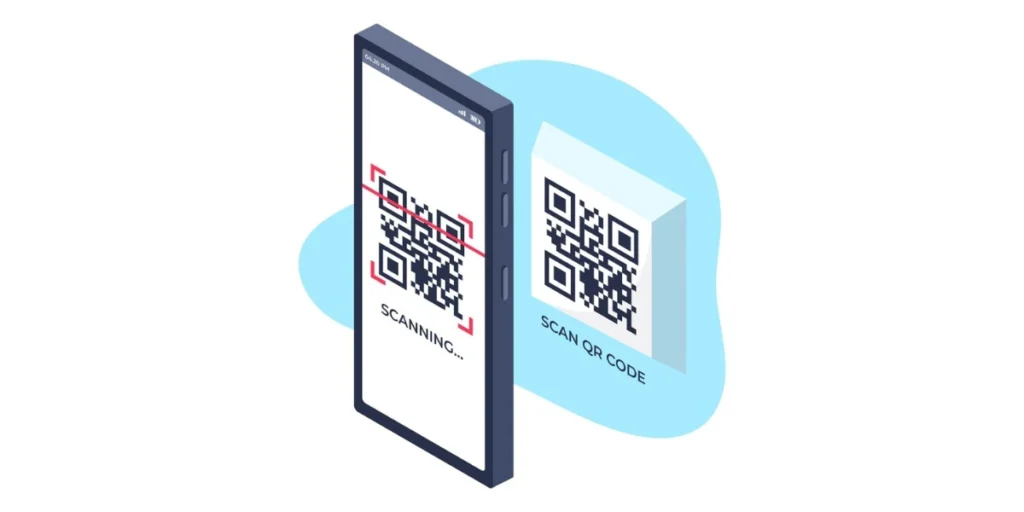
QR Codes are the game-changers for e-business cards as they make networking faster and even more efficient.
All a person needs to do is scan the code once, and their details will be directly accessible and saved to the device.
You can do so without having to manually type anything-a huge time-saver and it is a simple way to ensure that your information is stored correctly.
While each type of sharing method has a set benefit for unique networking circumstances, QR Codes are best suited for making contact information readily accessible.
Visually friendly and accessible instantly, they top professionals’ lists in choosing such an activity, with potential for maximum use in all their networking contacts.
Pro Tip: Nothing feels worse than trying to send a message or proposal to a potential client or partner only to realize that your contact information has been outdated. People should always receive your latest contact information. These updates keep your digital business card fresh and ensure your networking experiences are forever smooth and seamless.
Pros:
- Instant access with a quick scan; no manual input required.
- Works both online and offline, making it versatile.
- Universally compatible across all smartphones with a camera.
- Can be customized for branding and to fit any industry.
Cons:
- Requires a smartphone camera (but most devices have this feature).
Best For: All scenarios—large events, virtual meetings, online promotions, and everyday networking.
Industry Use Case:
- Lawyers: Easily share contact details during consultations without needing to exchange physical cards.
- Real Estate Agents: Quickly provide contact information and property listings during open houses.
- Healthcare Professionals: Share digital contact details in clinics and hospitals, reducing the need for printed cards.
Top Vendors:
- Scanova: Provides a robust tool for creating customized QR Codes for digital business cards.
- Beaconstac: Offers dynamic QR Codes with analytics and customization features.
- QR Tiger: Specializes in creating high-quality, trackable QR Codes for business cards.
Here’s a comparison table showcasing the different methods of sharing e-business cards:
| Sharing Method | Pros | Cons | Best For |
| Direct Link Sharing | – Easy to share in emails, social media, and communities – Works virtually | – Requires manual entry of link – Users may drop off due to the tedious process | Online promotions, email signatures |
| NFC (Near Field Communication) | – Quick sharing with a single tap – Great for in-person networking | – Limited to short-range interactions – Needs both devices to have NFC capability | Conferences, close-range networking |
| Email or SMS Sharing | – Personal touch with a self-introduction – Works on most smartphones | – Relies on the recipient’s engagement – Requires recipient’s contact information | Personalized sharing, messaging apps |
| AirDrop/Bluetooth | – Fast transfer between iOS devices (AirDrop) – Works offline | – Limited to close proximity – Compatibility issues across different device platforms | Close-range, offline sharing |
| QR Codes | – Instant access with a simple scan – No typing required – Works online and offline | – Requires a smartphone camera (but most have it) – Visual design may need customization | Versatile, large events, virtual sharing |
C. The role of QR Codes in e-business cards
1. Instant sharing of information
All contact details, such as the name, phone, email, and website of a person, can be accessed quickly with a scan.
This saves them the trouble of typing, letting them be saved in exact form.
2. Increased engagement
QR Codes can do way more than just share the contact information. They can also link you to social media profiles, a website, or even a multimedia portfolio.
All of this information comes to you in one scan.
3. Customizable looks
The good news is that your QR Code doesn’t have to be a default black-and-white square.
Personalizing the code helps it better communicate your personality or brand. Many tools out there allow you to change the color of your QR Code to fit your brand’s color scheme.
They even allow you to add company logo in the center of the code. This little step helps give your digital business card a more professional and aesthetic look.
It will make your card attractive and also ensure that your brand is recognizable at a glance. Also, with customization, you’re not at the risk of putting a dull black-and-white QR on an otherwise well-designed asset.
4. Professional & modern touch
QR Codes give a cool, tech-savvy look to your e-business card and show that you are at par with innovation.
That can impress clients and business partners as a testament of your modernity.
The usage of QR Codes on e-business cards is functional and professional and provides a creative layer in showing your difference in this busy business world.
5. Real-time updates

The last nail to the coffin of paper business cards is how fast they become outdated.
Let’s say your job title changed. Or did you switch your phone number? Suddenly, all these hundreds of printed cards become useless.
However, with an e-business card QR Code, you can instantly change your information.
You can update jobs, change contact information, and include newly added social media profiles quite easily.
All this info can be updated and reflected in your QR Code instantaneously.
You will not need to reprint or re-design your cards. Just update the linked content, and your digital business card is updated.
It is also a stress-free way of ensuring that your contacts always have your updated information.
6. Performance tracking
You can monitor the performance of your e-business cards. This is especially true for QR Codes due to their scan tracking feature.
For example, how many people have scanned the QR Code, where they scanned it, when they scanned it, and which device they used to scan it. This tracking helps you better optimize your campaigns.
Moreover, QR Codes also allow you to see how your end-users are interacting with the encoded content in your QR Code.
For example, do they click on the Save as Contact button after scanning the QR Code or not?
Pretty cool, right? Now, the next big step is to create them.
D. How to create an e-business card QR Code
Now that you know why it makes sense to use a QR Code for an e-business card, the next question is—how to create one?
Step 1: Find a QR Code generator
You’d need a QR Code generator that allows you to create an e-business card QR Code. It could be dynamic or static.
You can head on to any search engine and look for a relevant service. It will fetch you many options to choose from.
But going through all the search results to find the best one is a tedious process.
For your convenience, here is a detailed comparison of the best QR Code generator available online. This will help you make a sound decision smoothly.
Step 2: Create an e-business card QR Code
Using the Scanova QR Code generator for demo purposes, here’s a step-by-step guide on how to create an e-Business Card/VCard QR Code:
1. Go to Scanova’s business card QR Code creation page.
Here, you’ll be asked to select a template.
You can choose from a number of design templates that suit your needs
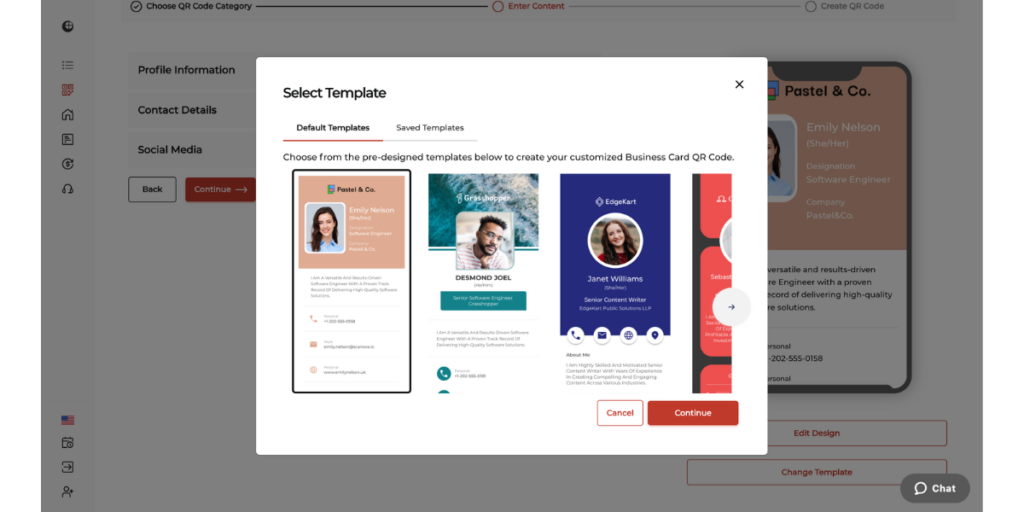
You can select your preferred template and click on continue to move to the next step. Or, if you already have a design in mind you can click cancel and you can start designing from scratch.
2. The next step would be to start customizing the landing page. You can do so by adding your details, such as name, company, email, and phone number.
You can also add additional fields such as an address, social profiles, or even a description box
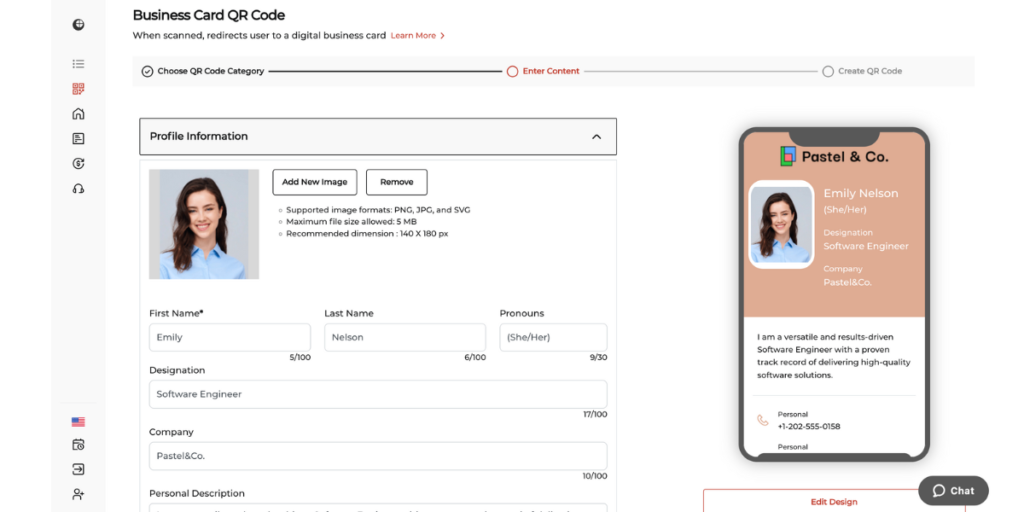
You can click on the Edit Design button here to change the colors and style of the landing page. Once done, click Continue.
3. Now, name the QR Code and click Create QR Code
4. Now, you’ll see the preview image of the QR Code. Below it, you will find the Edit Design button
5. If you click on this Edit Design option, you’ll see two QR Code design options:
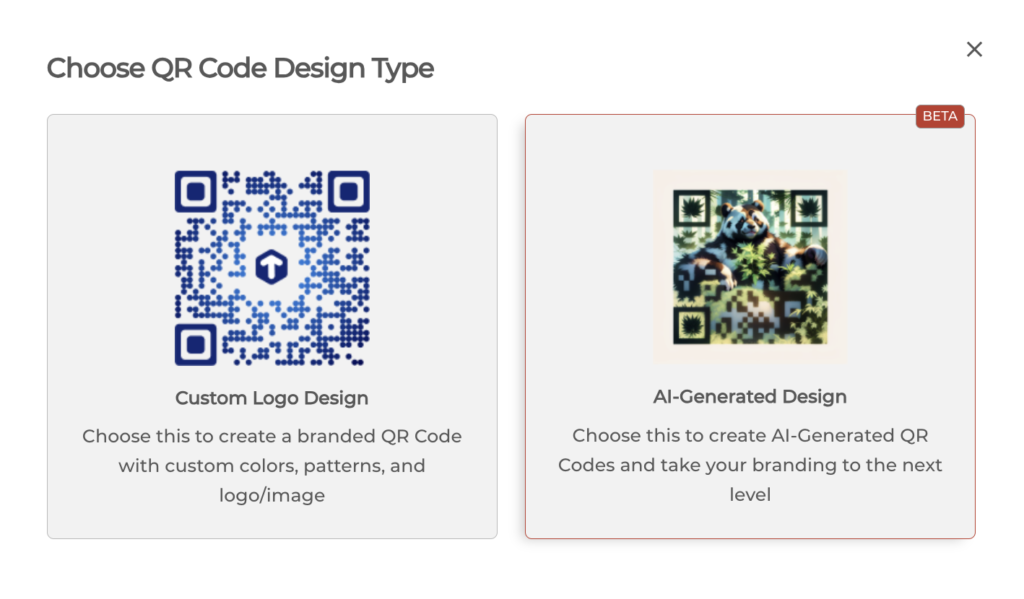
- Custom Logo Design: Here, you can add your company’s logo and colors to it.
- AI-Generated Design: This option allows you to place your QR Code on an AI-generated image.
You can proceed with either of the two options.
6. After deciding on the design, click Download. A window will open, prompting you to sign up for a 14-day free trial. Once you sign up, you can proceed to download the QR Code
7. Now you’ll have to specify the QR Code image’s format and dimensions. Once you do that, click Export
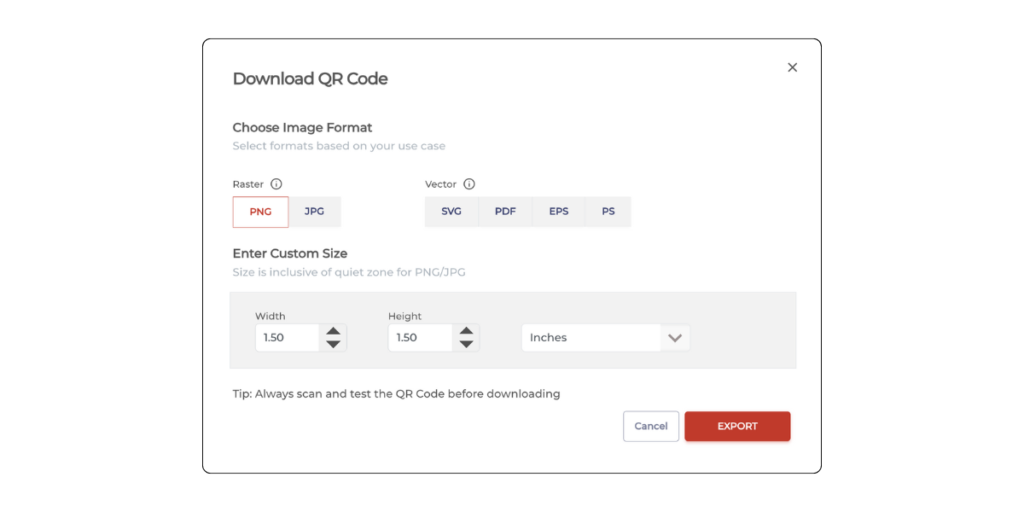
That’s it. Your e-business card/VCard QR Code will be downloaded. It is advisable to test scan the QR Code before putting it out for the target audience.
That’s it. That is all you need to know about the e-business card. You can now go ahead and create an e-business card using either of the three alternatives available.
E. Why is Scanova an amazing option for creating an e-business card QR Code?
You need to choose the right tool to create QR Coded e-business cards.
Scanova is one of the best options that will offer several advantages in creating your digital business card QR Code.
Scanova customizes QR Codes: Rest assured, you can completely customize QR Codes-be its shape, color, or even logo.
That basically means you are in complete charge of all the branding regarding your e-business card.
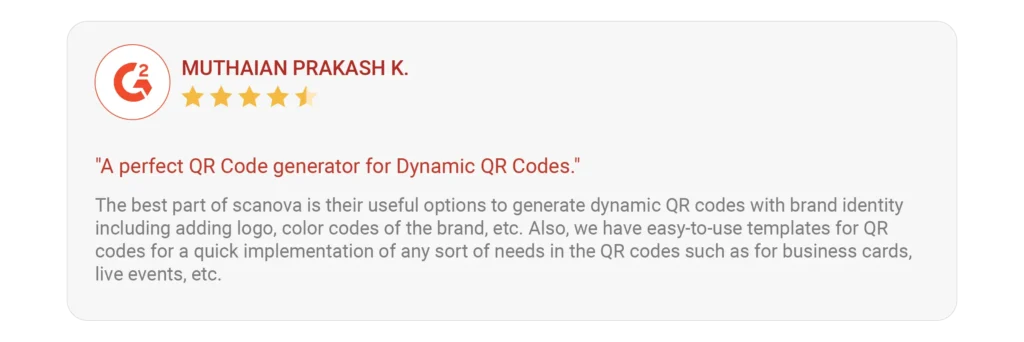
Tracking feature: Scanova QR Codes are trackable and dynamic. That means you can change the information behind them without altering their design.
You even get awesome analytics about your QR Code interaction, such as the scan time, scan device and demographic details, and even the number of scans a QR Code pulled.

User-friendly interface: People who are new to platforms will find it easy as well to navigate, especially when it comes to straightforward, professional-looking QR Code creation.
Free option: Scanova also offers a completely free option for business card QR Codes, which is open for everyone to explore.
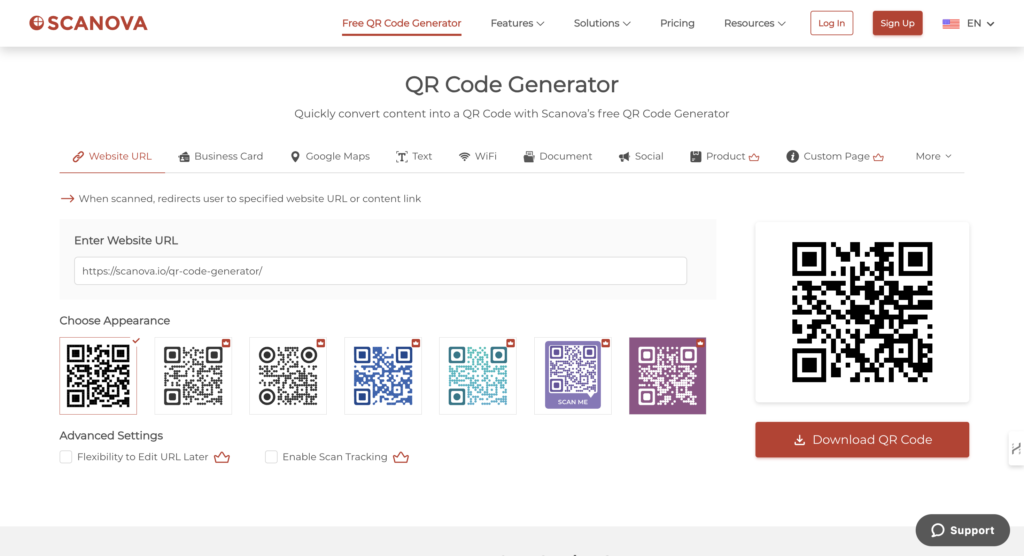
Quick tool: You can generate and download QR Codes using Scanova in a few seconds; no waste of time or even more hassle.
Data Security: Scanova follows advanced security protocols, ensuring data safety. It abides by international data privacy and security standards like GDPR, SOC2, and ISO 27001:2022.

Scanova is a secure, flexible, and effective tool that will make your e-business cards stand out in the competitive digital world.

F. FAQs: E-Business Cards

1. What is an e-business card?
An e-business card is a digital version of a traditional business card. It allows you to share your contact information easily using links, QR codes, or NFC technology.
2. How do I share my e-business card?
You can share your e-business card through QR Codes, email, messaging apps, or a simple link. Just choose the method that works best for you and your recipient.
3. Can I customize my e-business card?
Absolutely! Many e-business card platforms like Scanova allow you to customize your card’s design, colors, and layout.
Additionally, You can add your logo and social media links. You can even edit the landing page of the QR Code and the look of your QR as well.
4. Do e-business cards save time?
Yes! E-business cards save time because recipients can scan a QR Code and instantly save their contact details. No manual typing is required.
5. Are e-business cards environmentally friendly?
Yes, they are! E-business cards reduce paper waste since they are digital.
This makes them a more sustainable choice compared to traditional paper cards.
6. What happens if I change my contact details?
With e-business cards, especially those using dynamic QR Codes, you can update your information easily. Just edit the details in your digital card, and everyone will have the latest info.
7. Can I track how many people view my e-business card?
Yes! Some e-business card services like Scanova offer tracking features. You can see how many times your card was scanned and other engagement metrics.
8. What should I include in my e-business card?
Your e-business card should include essential contact details like your name, phone number, email, and company information. You can also add links to your social media profiles and website.


